Contents
1
Contents
General information . . . . . . . . . . . . . . . . . . . . . . . . . . . . . . . . . . . . . 2
Explanation of symbols . . . . . . . . . . . . . . . . . . . . . . . . . . . . . . . . . . 2
For your safety!
. . . . . . . . . . . . . . . . . . . . . . . . . . . . . . . . . . . . . . 3
Functions of your navigation system . . . . . . . . . . . . . . . . . . . . . . . . . . . 4
Maintenance and care . . . . . . . . . . . . . . . . . . . . . . . . . . . . . . . . . . . 5
Operation . . . . . . . . . . . . . . . . . . . . . . . . . . . . . . . . . . . . . . . . . . . 6
Remote controls . . . . . . . . . . . . . . . . . . . . . . . . . . . . . . . . . . . . . . 6
Switching on / off . . . . . . . . . . . . . . . . . . . . . . . . . . . . . . . . . . . . . 8
Volume adjustment . . . . . . . . . . . . . . . . . . . . . . . . . . . . . . . . . . . . 8
Inserting/changing the map DVD/CD . . . . . . . . . . . . . . . . . . . . . . . . . . . 9
Menu operation . . . . . . . . . . . . . . . . . . . . . . . . . . . . . . . . . . . . . . 9
Start menu . . . . . . . . . . . . . . . . . . . . . . . . . . . . . . . . . . . . . . . . 10
Navigation . . . . . . . . . . . . . . . . . . . . . . . . . . . . . . . . . . . . . . . . . . 11
Quick start. . . . . . . . . . . . . . . . . . . . . . . . . . . . . . . . . . . . . . . . . 11
Destination input . . . . . . . . . . . . . . . . . . . . . . . . . . . . . . . . . . . . . 12
Via points (intermediate destinations)
. . . . . . . . . . . . . . . . . . . . . . . . . 16
Guidance . . . . . . . . . . . . . . . . . . . . . . . . . . . . . . . . . . . . . . . . . 17
TMC traffic information . . . . . . . . . . . . . . . . . . . . . . . . . . . . . . . . . 22
Dynamic route planning . . . . . . . . . . . . . . . . . . . . . . . . . . . . . . . . . 25
The “Info” menu . . . . . . . . . . . . . . . . . . . . . . . . . . . . . . . . . . . . . 26
The trip computer
. . . . . . . . . . . . . . . . . . . . . . . . . . . . . . . . . . . . 26
Address book . . . . . . . . . . . . . . . . . . . . . . . . . . . . . . . . . . . . . . . 27
Emergency menu . . . . . . . . . . . . . . . . . . . . . . . . . . . . . . . . . . . . . 28
Telephone . . . . . . . . . . . . . . . . . . . . . . . . . . . . . . . . . . . . . . . . . . 29
Telephone menu . . . . . . . . . . . . . . . . . . . . . . . . . . . . . . . . . . . . . 29
Calling . . . . . . . . . . . . . . . . . . . . . . . . . . . . . . . . . . . . . . . . . . . 30
SMS (Short Message Service) . . . . . . . . . . . . . . . . . . . . . . . . . . . . . . . 34
Telephone settings . . . . . . . . . . . . . . . . . . . . . . . . . . . . . . . . . . . . 36
Settings . . . . . . . . . . . . . . . . . . . . . . . . . . . . . . . . . . . . . . . . . . . 37
Adapting navigation system . . . . . . . . . . . . . . . . . . . . . . . . . . . . . . . 37
C-IQ – Intelligent Content On Demand . . . . . . . . . . . . . . . . . . . . . . . . . . 42
C-IQ – Your key to map, traffic and travel information . . . . . . . . . . . . . . . . 42
C-IQ menu . . . . . . . . . . . . . . . . . . . . . . . . . . . . . . . . . . . . . . . . . 43
Registering the system and activating products
. . . . . . . . . . . . . . . . . . . . 43
Info Points function. . . . . . . . . . . . . . . . . . . . . . . . . . . . . . . . . . . . 47
Travel info. . . . . . . . . . . . . . . . . . . . . . . . . . . . . . . . . . . . . . . . . 47
Appendix . . . . . . . . . . . . . . . . . . . . . . . . . . . . . . . . . . . . . . . . . . 49
TMC symbols . . . . . . . . . . . . . . . . . . . . . . . . . . . . . . . . . . . . . . . 49
Default settings . . . . . . . . . . . . . . . . . . . . . . . . . . . . . . . . . . . . . . 50
Bluetooth pairing (linking of mobile phone with CIX 3000 Blue) . . . . . . . . . . . 51
�
2
General information
Explanation of symbols
The following symbols are used in this manual:
A This symbol is used to indicate safety instructions and warnings. These contain important
information for the safe use of the unit. Failure to observe this information may result in material
damage or personal injury. Therefore, please observe this information with particular care.
� asks you to perform an action.
: shows the unit’s reaction.
provides extra info.
identifies a list.
“ ” Text in quotation marks identifies a screen menu option.
Hotlines are available in many countries to handle queries regarding our multimedia
systems. You will find up-to-date telephone numbers on the internet at:
www.vdodayton.com
© 2005 Siemens VDO Trading GmbH
All rights reserved.
These operating instructions are subject to copyright.
Subject to technical and visual changes and typing errors.
✎
❑
�
General information
3
For your safety!
A The use of the navigation system by no means relieves the driver of his/her responsibilities.
Always observe the applicable traffic regulations and take the current traffic conditions into
consideration. They always have priority over the information provided by the navigation
system if the actual traffic situation and the information from the navigation system conflict.
A The system does not take the relative safety of the suggested routes into consideration.
Road blocks, building sites, height or weight restrictions, traffic or weather conditions or other
influences which affect the route safety or travel time are not taken into consideration for the
suggested routes. Use your own discretion in order to decide on the suitability of the suggested
routes. Use the “Alternative Route” function to receive better routing suggestions, or simply
follow your preferred route and the automatic routing recalculation will plan the route for the
remainder of your journey.
A In the interests of road safety, only perform inputs to the navigation system and the phone
prior to commencing your journey or when the vehicle is stationary.
A The current statutory speed limit on the road always takes priority over the values stored
on the data CD/DVD. It is impossible to provide an assurance that the speed values of the navi
gation system will always match those of the current traffic regulations in every situation.
A In certain areas, one-way streets, turn-off and entry restrictions (e.g. to pedestrian zones)
have not been surveyed. In areas such as these, the navigation system will issue a warning. Pay
particular attention to one-way streets, turn-off and entry restrictions.
A Please make certain that all persons using your multimedia system have access to this
manual, and that they read the instructions and suggestions concerning system operation
prior to use.
A If your screen is installed on a flexible support, adjust it so that you can see the screen
contents quickly and easily, and reflections and dazzle or glare are avoided. Find a suitable
spot to stop the vehicle prior to performing adjustments.
A If your monitor is installed on a fixed support, check that your dealer has installed it in
accordance with the above recommendations. The screen must not be installed in a position
where it obstructs the view of any items necessary for the safe operation of the vehicle (e.g.
road, mirrors, instruments, surroundings). In addition, the monitor may not be installed within
deployment range of the airbag.
A Only look at the monitor if it is safe to do so. Find a suitable place to stop should you need
to look at the screen for a longer period of time.
A Always store the remote control in a safe place. In the case of an emergency stop or an
accident, unsecured objects may fly about and injure passengers.
A The values displayed on the system’s “Trip computer”, giving the current speed, driving
time and the elapsed distance, are calculated values. Accuracy cannot always be guaranteed.
In the case of speed, the vehicle speedometer must always be given priority.
k
�
4
General information
A Do not rely exclusively on the navigation system when attempting to locate an emergency
service (police, fire service, etc.). It cannot be guaranteed that all available emergency services
in your vicinity are stored in the database. Use your own discretion and abilities to secure help
in such situations.
A Making a phone call while driving can greatly reduce your level of awareness and distract
you from the traffic situation. In order to avoid endangering the occupants and other road users,
the driver should not make phone calls while driving. Observe the local regulations relating to
making phone calls in the vehicle.
Functions of your navigation system
By buying this Multimedia System you have purchased a high-performance instrument
which has been designed to assist drivers in daily traffic. Simply enter the destination
prior to setting off, activate “Guidance” and you are ready to go. The navigation system
will provide driving instructions in audible and visual form. With the mobile phone
connected, you increase the safety and ease with which calls can be made from within
the vehicle. The system is simple to use, because of the small number of operating
elements and its clear menu structure.
I Range of functions
Some of the functions described in this manual are only to be used in conjunction with
optional accessories. It may also be that you cannot use certain functions in some countries
because the data has not been surveyed. Due to the large range of functions, a con-
scious decision was taken not to allow all the settings to be used in any combination in
the interests of ensuring ease of use and functionality.
I Distance indications
On main roads, the distances to exits indicated by the system deviate from those on
road signs. The road signs on main roads refer to the start of the exit, while the navi-
gation system always indicates the distance to the end of the slip road. This is the point
where the driving lanes fork (separate).
I Operating restrictions (country-specific)
If a symbol depicting a crossed-out hand appears in the bottom status line it means
that only limited operating options are available whilst driving. Whether or not this
function is activated will depend upon the prevailing national regulations.
I GPS reception
The system has been designed to remain operational even when there is poor GPS re-
ception. However, positional accuracy may be impaired.
�
General information
5
I Start-up characteristics
If the vehicle has been parked for some time, the satellites will have continued on their
orbits. As a result, once the ignition has been switched on, it may take several minutes
before a sufficient number of satellites are being received and the system can start
analysing their signals. Adequate reception (three-dimensional position) is indicated
by the Ù satellite symbol in the set text colour on the display. The satellite symbol
remains red if GPS reception is inadequate.
During the start-up process, the navigation system may report the message: “Please
proceed to the planned route”. The system assumes that the vehicle is located off a
stored road. If other roads exist in this area, the navigation system may issue incorrect
messages. The system assumes that the vehicle is located on a different road.
I Automatic route re-calculation
If you do not follow the instructions of the system, the system will automatically plan a
new route.
I Areas with limited road information
In some areas, not all road information may be available on the map DVD/CD. Thus,
for example, turn-off prohibitions, information on the direction of travel in a one-way
street or prohibited entry into a pedestrian zone may be missing. The navigation system
will display a warning if you drive into such an area.
Information concerning the functions of the navigation system can be found on the
internet at www.vdodayton.com.
Maintenance and care
Do not clean using cleaning fluid, alcohol or other solvents. A damp cloth is best suited.
✎
�
6
Operation
Remote controls
Depending on the scope of supply, various remote controls might be used. Full func-
tionality can only be ensured if the correct remote control is activated.
I Activating the correct remote control
� Select “Settings –> Remote control” and activate the desired remote control by
pressing the OK key.
� If you additionally use a steering wheel remote control, activate this with a tick.
A Please do not expose the remote control with inserted batteries to direct sunlight.
I Active holder (accessory)
If you only use your remote control in its active holder, we recommend that you remove
the batteries from the remote control. The system can be operated when the remote
control is in its holder.
I Battery change display
If the system no longer responds when the buttons are pressed or the battery symbol
( appears in the status line, the batteries of the remote control must be changed.
Notes:
In many countries, flat batteries may not be disposed of together with the normal do-
mestic rubbish. Please determine how to dispose of flat batteries in accordance with
local regulations.
Use only leak-proof batteries. Battery leakage can cause damage to the remote control
or to your vehicle.
Never expose the remote control to direct sunlight or extreme heat. The batteries dis-
charge at high temperatures and there is a risk of leakage.
�
Operation
7
1
2
3
4
5
6
7
9
8
1
2
3
4
5
7
6
RC 5400
RC 5000
RC 5400
1 VOICE / ALT-R . . . Press briefly: Calls up the current audible guidance message.
Press and hold: Switches to “Alternative Route” menu.
2 4, 6, 8, 2 . . . . . Cursor buttons, move the cursor in the menus.
3 OK . . . . . . . . . . . . Confirms a selection.
4 ESC . . . . . . . . . . . Press briefly: Jumps back to the previous menu.
Press and hold: Jumps directly to the Start menu.
5 NAVIGATION . . . . Press briefly: Switches the display type of the guidance screen.
Press and hold: Moves directly to the Start menu.
6 ENTERTAIN . . . . . Press briefly: Calls up the previously used entertainment source.
7 FAVOURITE . . . . . This button is freely programmable to provide direct access to
selected functions. You can find detailed information on
programming the button in the “Settings” section, Page 37.
8 W, V . . . . . . . . . Volume setting.
9 HOME . . . . . . . . . Press briefly: Adopts the address stored under “Home” in the
directional guidance.
Press and hold: Adopts the address stored under “Work” in the
directional guidance.
The buttons y, z and x have no function in relation to the navigation system.
RC 5000
1 ALT-R. . . . . . . . . . Switches to “Alternative Route” menu.
2 4, 6, 8, 2 . . . . . Cursor buttons, move the cursor in the menus.
3 OK . . . . . . . . . . . . Confirms a selection.
4 MENU . . . . . . . . . Calls up the Start menu.
5 MAP . . . . . . . . . . Switches the display type of the guidance screen.
6 -, + . . . . . . . . . Volume setting.
7 REP . . . . . . . . . . . Calls up the current audible guidance message.
�
8
Operation
Switching on / off
The navigation computer is switched on and off together with the ignition.
� Switch on the ignition.
: As soon as the navigation system is operational, an instruction about using the system
appears in the display.
� Read this instruction and confirm it by pressing the OK button on the remote control.
: The Start menu appears.
I Stand-by mode
You can switch the system into stand-by mode as follows:
� Select “Stand-by” in the Start menu.
: The display and the audible guidance messages are deactivated.
� Press one of the cursor buttons 4, 6, 8, 2 or the OK button on the remote control
to exit stand-by mode again.
If an external loudspeaker is connected, you will continue to hear the audible mes-
sages in stand-by mode.
If you want to deactivate the audible messages, select “Stop guidance” before switch-
ing the system to stand-by mode.
If the navigation system is switched off in stand-by mode, it restarts in stand-by mode
when the ignition is switched on again.
I Shut-down delay time
Immediately after switching off the ignition, the monitor is deactivated, but the navi-
gation computer remains active for a period that can be set. This has the advantage
that you can continue the directional guidance after a short stop (e.g. at the petrol
station), without the navigation computer having to calculate the route again.
The shut-down delay time can be set between 1 and 10 minutes in the “Settings –>
General settings –> Shut-down timer” menu. See Page 41.
Volume adjustment
You can set the volume of the audible guidance messages as follows:
� Press the V button once or several times to increase the volume of the audible
messages.
� Press the W button once or several times to decrease the volume of the audible
messages.
✎
✎
�
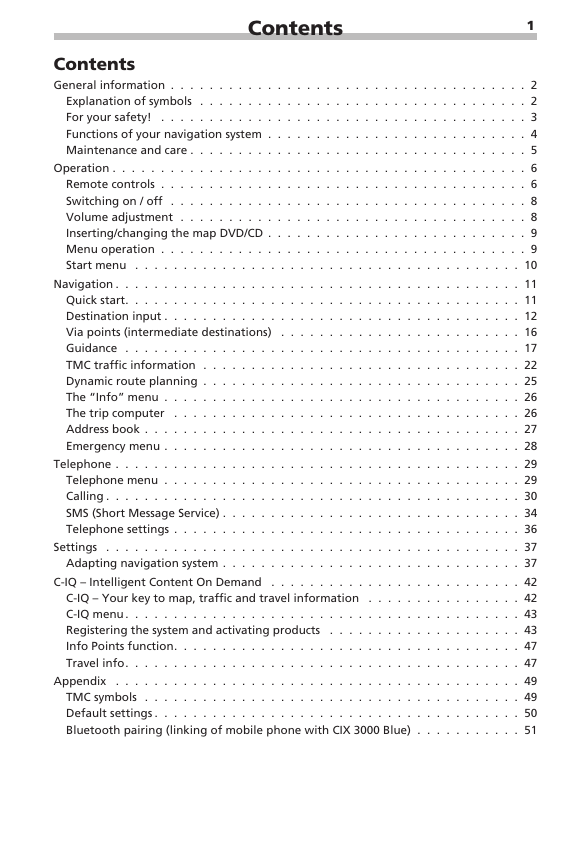

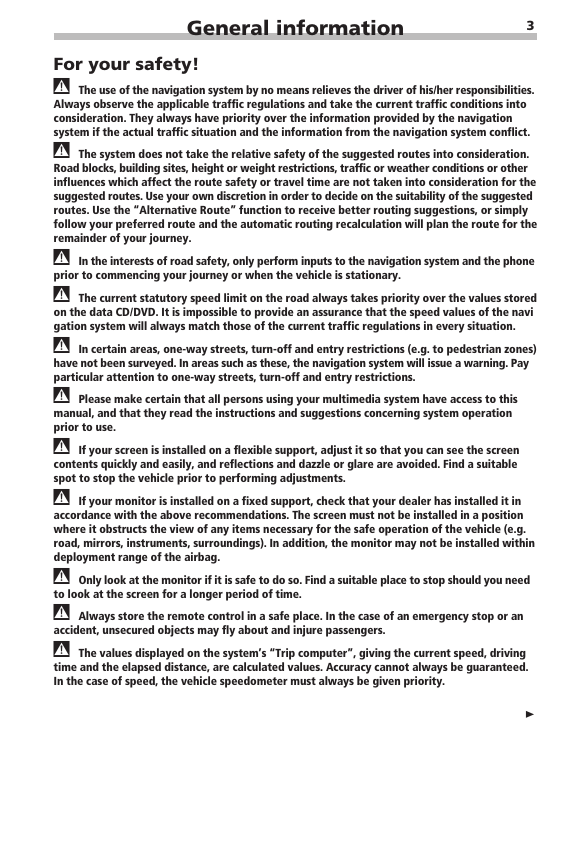
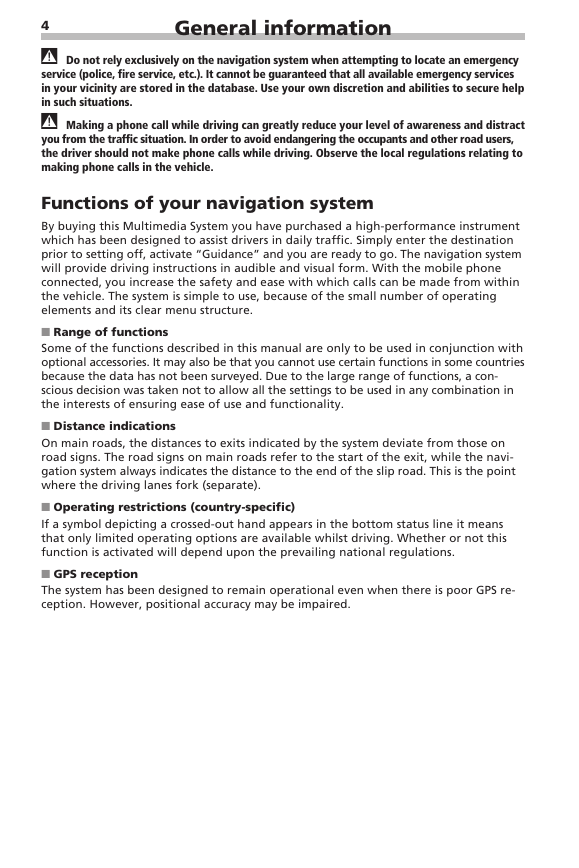
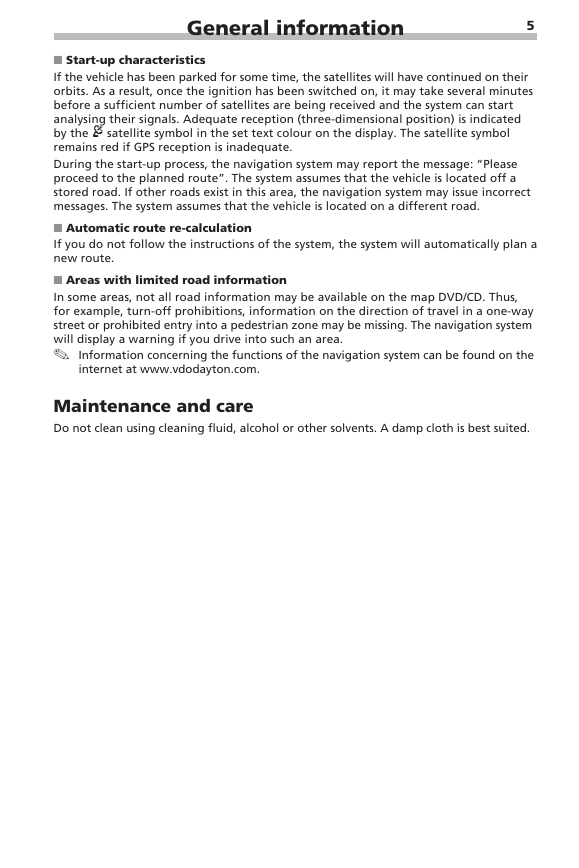
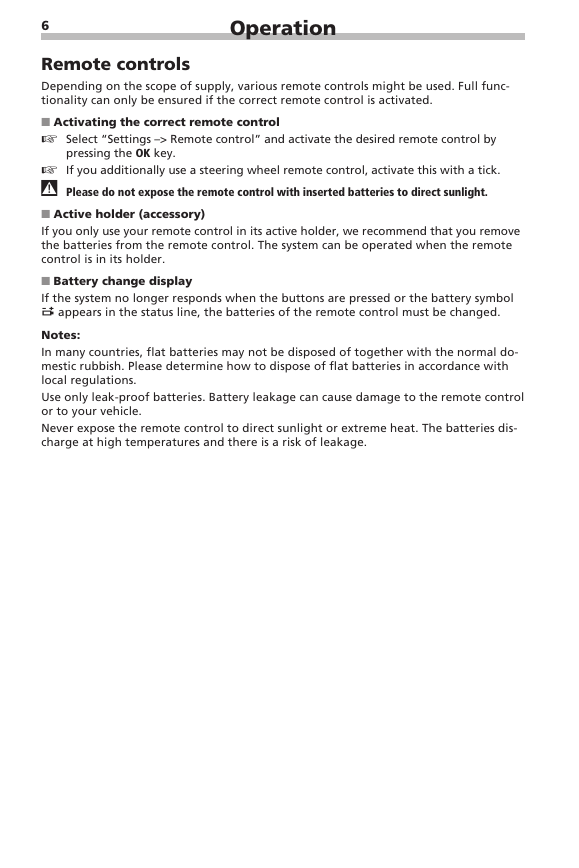
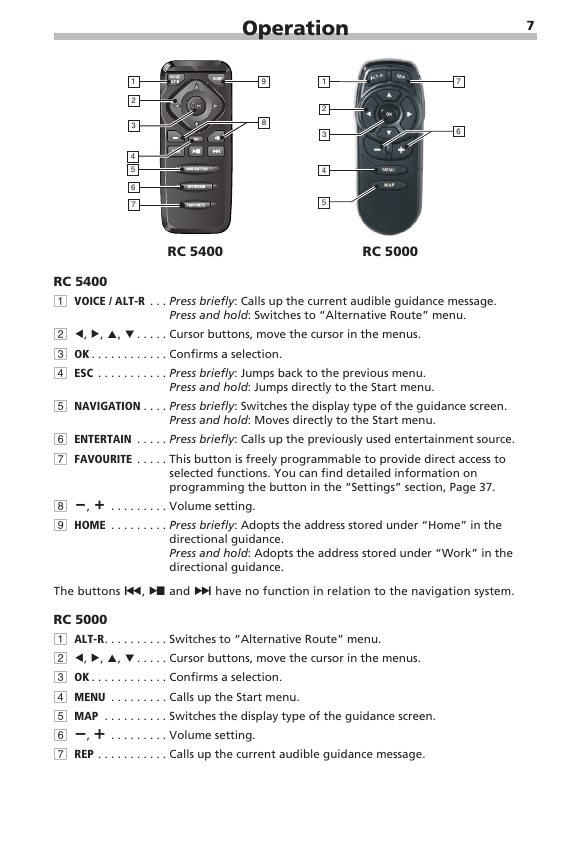
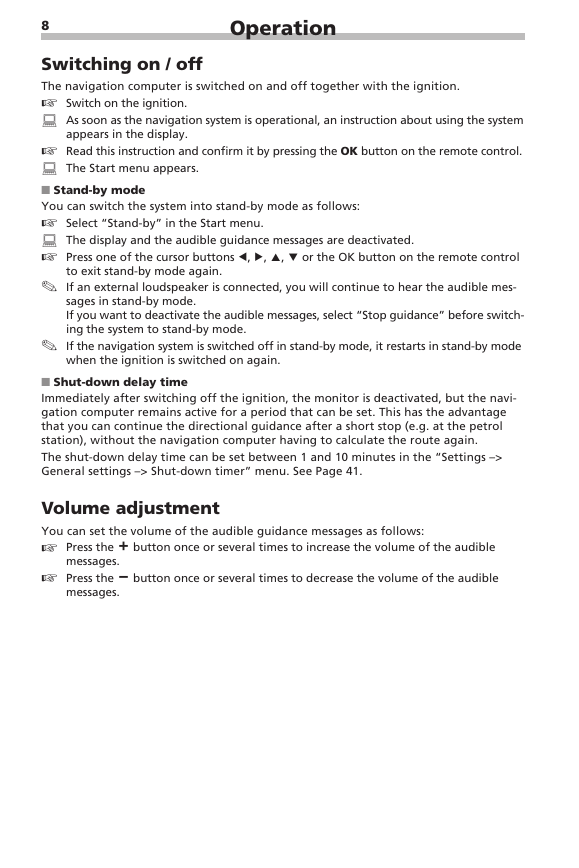








 2023年江西萍乡中考道德与法治真题及答案.doc
2023年江西萍乡中考道德与法治真题及答案.doc 2012年重庆南川中考生物真题及答案.doc
2012年重庆南川中考生物真题及答案.doc 2013年江西师范大学地理学综合及文艺理论基础考研真题.doc
2013年江西师范大学地理学综合及文艺理论基础考研真题.doc 2020年四川甘孜小升初语文真题及答案I卷.doc
2020年四川甘孜小升初语文真题及答案I卷.doc 2020年注册岩土工程师专业基础考试真题及答案.doc
2020年注册岩土工程师专业基础考试真题及答案.doc 2023-2024学年福建省厦门市九年级上学期数学月考试题及答案.doc
2023-2024学年福建省厦门市九年级上学期数学月考试题及答案.doc 2021-2022学年辽宁省沈阳市大东区九年级上学期语文期末试题及答案.doc
2021-2022学年辽宁省沈阳市大东区九年级上学期语文期末试题及答案.doc 2022-2023学年北京东城区初三第一学期物理期末试卷及答案.doc
2022-2023学年北京东城区初三第一学期物理期末试卷及答案.doc 2018上半年江西教师资格初中地理学科知识与教学能力真题及答案.doc
2018上半年江西教师资格初中地理学科知识与教学能力真题及答案.doc 2012年河北国家公务员申论考试真题及答案-省级.doc
2012年河北国家公务员申论考试真题及答案-省级.doc 2020-2021学年江苏省扬州市江都区邵樊片九年级上学期数学第一次质量检测试题及答案.doc
2020-2021学年江苏省扬州市江都区邵樊片九年级上学期数学第一次质量检测试题及答案.doc 2022下半年黑龙江教师资格证中学综合素质真题及答案.doc
2022下半年黑龙江教师资格证中学综合素质真题及答案.doc